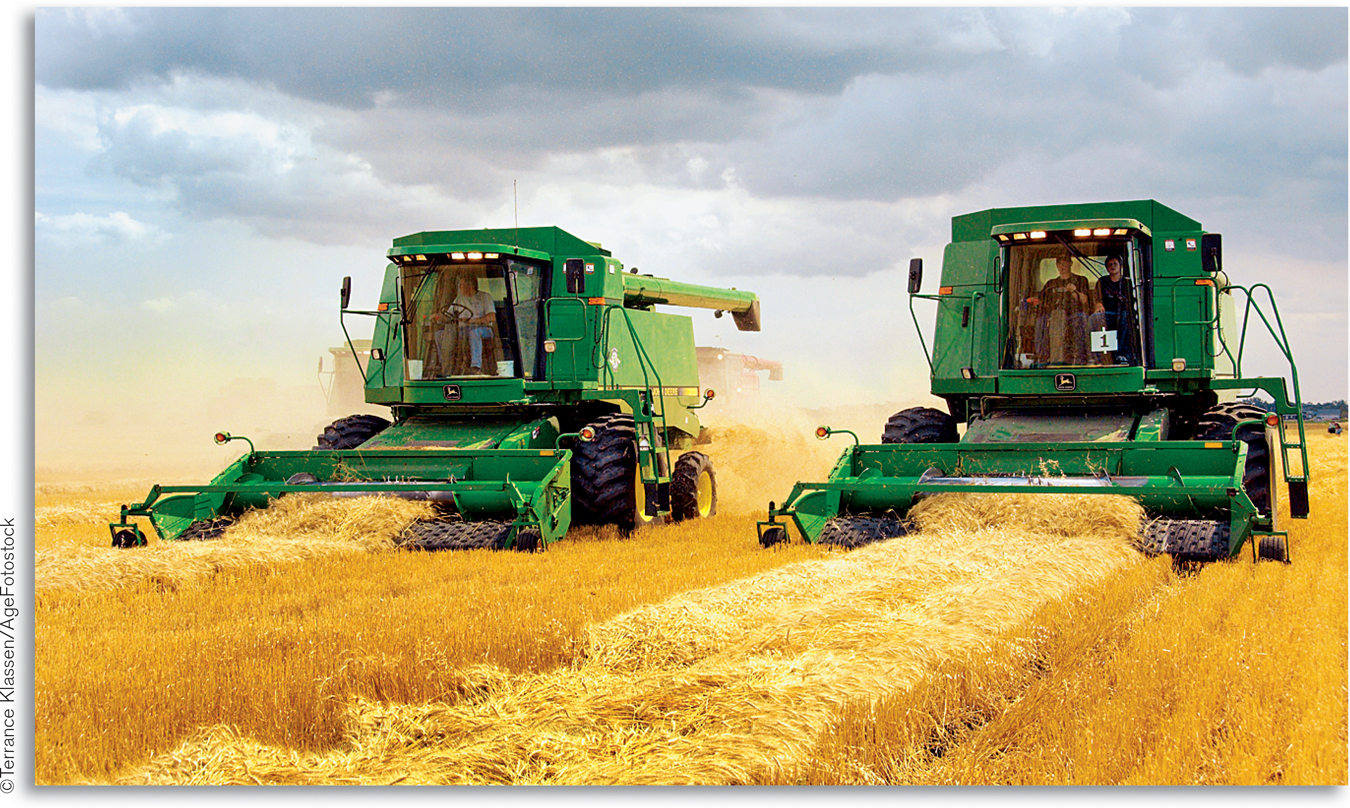Behind the Supply Curve: Inputs and Costs
11
 What You Will Learn in This Chapter
What You Will Learn in This Chapter
The importance of the firm’s production function, the relationship between quantity of inputs and quantity of output
Why production is often subject to diminishing returns to inputs
The various types of costs a firm faces and how they generate the firm’s marginal and average cost curves
Why a firm’s costs may differ in the short run versus the long run
How the firm’s technology of production can generate increasing returns to scale
THE FARMER’S MARGIN

“O BEAUTIFUL FOR SPACIOUS (skies, for amber waves of grain.” So begins the song “America the Beautiful.” And those amber waves of grain are for real: though farmers are now only a small minority of America’s population, our agricultural industry is immensely productive and feeds much of the world.
If you look at agricultural statistics, however, something may seem a bit surprising: when it comes to yield per acre, U.S. farmers are often nowhere near the top. For example, farmers in Western European countries grow about three times as much wheat per acre as their U.S. counterparts. Are the Europeans better at growing wheat than we are?
No: European farmers are very skillful, but no more so than Americans. They produce more wheat per acre because they employ more inputs—
Notice our use of the phrase “at the margin.” Like most decisions that involve a comparison of benefits and costs, decisions about inputs and production involve a comparison of marginal quantities—
In Chapter 9 we considered the case of Alex, who had to choose the number of years of schooling that maximized his profit from schooling. There we used the profit-
Here and in Chapter 12, we will show how marginal analysis can be used to understand these output decisions—